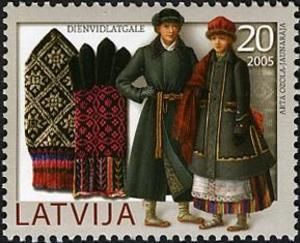Latvia, officially known as the Republic of Latvia, is a country in the Baltic region of Northern Europe. It has been referred to as one of the Baltic states. Latvians and Livonians are the indigenous people of Latvia. Latvian and Lithuanian are the only two surviving Baltic languages.
After centuries of Swedish, Polish-Lithuanian and Russian rule, a rule mainly executed by the Baltic German aristocracy, the Republic of Latvia was established on 18 November 1918 when it broke away from the Russian Empire and declared independence in the aftermath of World War I.
However, by the 1930s the country became increasingly autocratic after the coup in 1934 establishing an authoritarian regime under Kārlis Ulmanis. The country’s de facto independence was interrupted at the outset of World War II, beginning with Latvia’s forcible incorporation into the Soviet Union, followed by the invasion and occupation by Nazi Germany in 1941, and the re-occupation by the Soviets in 1944 (Courland Pocket in 1945) to form the Latvian SSR for the next 45 years.
The peaceful Singing Revolution, starting in 1987, called for Baltic emancipation from Soviet rule and condemning the Communist regime’s illegal takeover. It ended with the Declaration on the Restoration of Independence of the Republic of Latvia on 4 May 1990 and restoring de facto independence on 21 August 1991.
Articles
- All About Stamps: Stamps and Latvia’s bloodstained path to independence in 1918
- Aspit: Latvian Maps Stamps Introduction
- PENPEX: A Topic on the Back – Maps on Stamps






